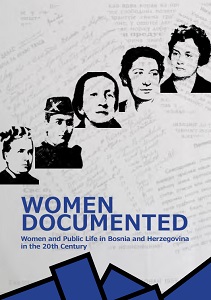PART II: 1941-1945 The Second World War and Experiences of Bosnia-Herzegovinian Women
PART II: 1941-1945 The Second World War and Experiences of Bosnia-Herzegovinian Women
Author(s): Amila Ždralović
Subject(s): Politics, Gender Studies, Civil Society, WW II and following years (1940 - 1949)
Published by: Sarajevo Open Centre
Keywords: women; public life; BiH; NDH; inclusion; national heroines; organisations; AFŽ; wartime; ZAVNOBiH; AVNOJ; WWII;
Summary/Abstract: This part of the book deals with the position and activities of women in Bosnia and Herzegovina during World War II. This period is marked by women’s inclusion in various activities under the national liberation struggle (NOB) for freedom, which gave rise to the development of different social values, including the idea of gender equality in all social segments. Soon-to-come social changes were not of purely declarative or formally legal nature, but seriously put in question traditional prejudices and stereotypes about women’s place and role in society. The new sociocultural context also enabled the creation of organisations of the AntiFascist Women’s Front (AFŽ). Although the question of whether and to what extent this form of women’s organisation can carry a feminist prefix remains open, the role it played in processes of women’s emancipation is unquestionable. In addition to numerous tasks, women gathered around the unique AFŽ organisation particularly stood out with their cultural and educational work. With the removal of formal and legal obstacles for women’s inclusion in various forms of social activities in the spirit of communist ideology, tarnishing the traditional picture of women’s place and social role and their mass inclusion in NOB and establishment of AFŽ as a unified women’s organisation - which, among other things, implemented different women’s education programmes – key preconditions were created for women’s entry into the public sphere and their participation in making important political decisions. However, this transition never materialised, confirmed by various analyses of women’s (non)participation in ZAVNOBiH (The State Anti-Fascist Council for the National Liberation of Bosnia and Herzegovina) and AVNOJ (Anti-Fascist Council for the National Liberation of Yugoslavia) that are reviewed in the final part of this paper.
Book: Women Documented. Women and Public Life in Bosnia and Herzegovina in the 20th Century
- Page Range: 40-65
- Page Count: 16
- Publication Year: 2014
- Language: English
- Content File-PDF

